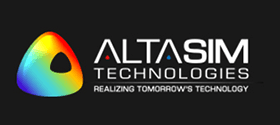

There is an ever-increasing interest in structural-thermal-optical performance (STOP) analysis for optical systems, in which temperature change and structural loads affect the optical performance. The need for STOP analysis is greatest for extremely high-power systems, those in extreme operating environments, or those in which highly accurate predictions are vital. Examples include industrial fiber laser systems, space-based laser interferometers, balloon-based telescopes, and solar thermal desalination systems.
A high-fidelity STOP analysis must consider the different pathways by which temperature changes affect optical performance. Most materials have temperature-dependent refractive indices. In addition, thermal stress may contribute to structural deformation alongside other applied loads such as gravity. If the optics themselves are the heat source, as in high-power fiber laser systems, the STOP analysis may require a bidirectional coupling in which the energy dissipated by the optics acts as an additional heat source in the thermal analysis.

Developing accurate solutions for STOP analyses requires multiphysics simulation software and the expertise to develop these simulations. In this presentation, guest speakers Kyle Koppenhoefer, Ph.D., and Joshua Thomas from AltaSim Technologies will join Christopher Boucher of COMSOL to discuss the development of STOP solutions for optical devices. The webinar will also include a live demo in the COMSOL Multiphysics® software and an open Q&A session.
Who should attend:
· Laser engineers
· Optical design engineers
· AR/VR researchers
